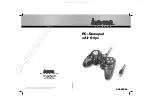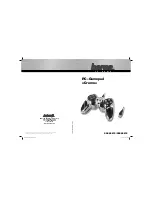
D8 Series User’s Guide
Chapter 2: Installation
35
Current Input Connections
Current inputs require accessory resistors. Special input resistors installed at Watlow for analog
current signals are such that the controller sees a -10 to 60mV signal across its inputs for the loop.
CH IN+
CH IN-
Device with
Output
Current
Figure 2.17
– Current Signal Connections
Wiring Control and Digital I/O
This section describes how to wire and configure the control outputs for the D8 series controller. The
D8 provides dual control outputs for each loop. These outputs can be enabled or disabled, and are
connected through a TB50 or TB18.
NOTE!
Control outputs are connected to controller common when the control output
is on. If you connect external devices that may have a low side at a voltage other than
controller ground, you may create ground loops. To prevent ground loops, use isolated
solid state relays and isolate the control device inputs.
Output Wiring Recommendations
When wiring output devices, use multicolored, stranded, shielded cable for analog outputs and
digital outputs connected to panel-mounted solid state relays.
• Analog outputs usually use a twisted pair.
• Digital outputs usually have 9 to 20 conductors, depending on wiring technique.
Cable Tie Wraps
After you wire outputs to the TB50, install the cable tie wraps to reduce strain on the connectors.
Each row of terminals has a cable tie wrap hole at one end. Thread the cable tie wrap through the
cable tie wrap hole. Then, wrap the cable tie wrap around the wires attached to that terminal block.
Digital Outputs
The D8 provides dual control outputs for up to eight loops. By default, heat outputs are enabled and
cool outputs are disabled. If the heat or cool output is disabled for a loop, then the output is available
for alarms. The CPU watchdog timer output can be used to monitor the state of the controller. See
CPU Watchdog Timer on page 37.
Table 2.5
—
Digital Output States and Values Stored in the Controller
STATE
VALUE
1
DESCRIPTION
Off
0
Open circuit
On
1
Sinking current to common
1
Read and write these values through communications.
















































